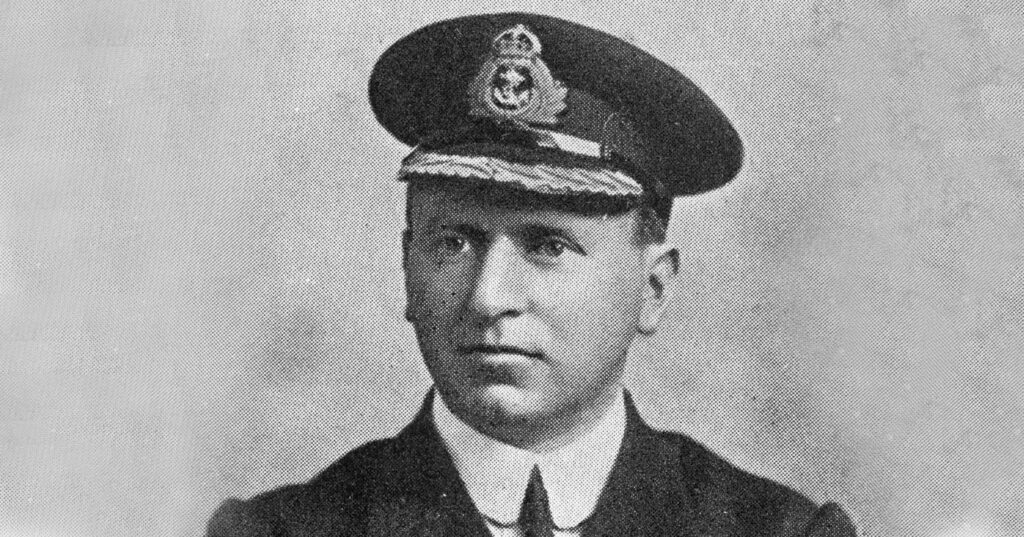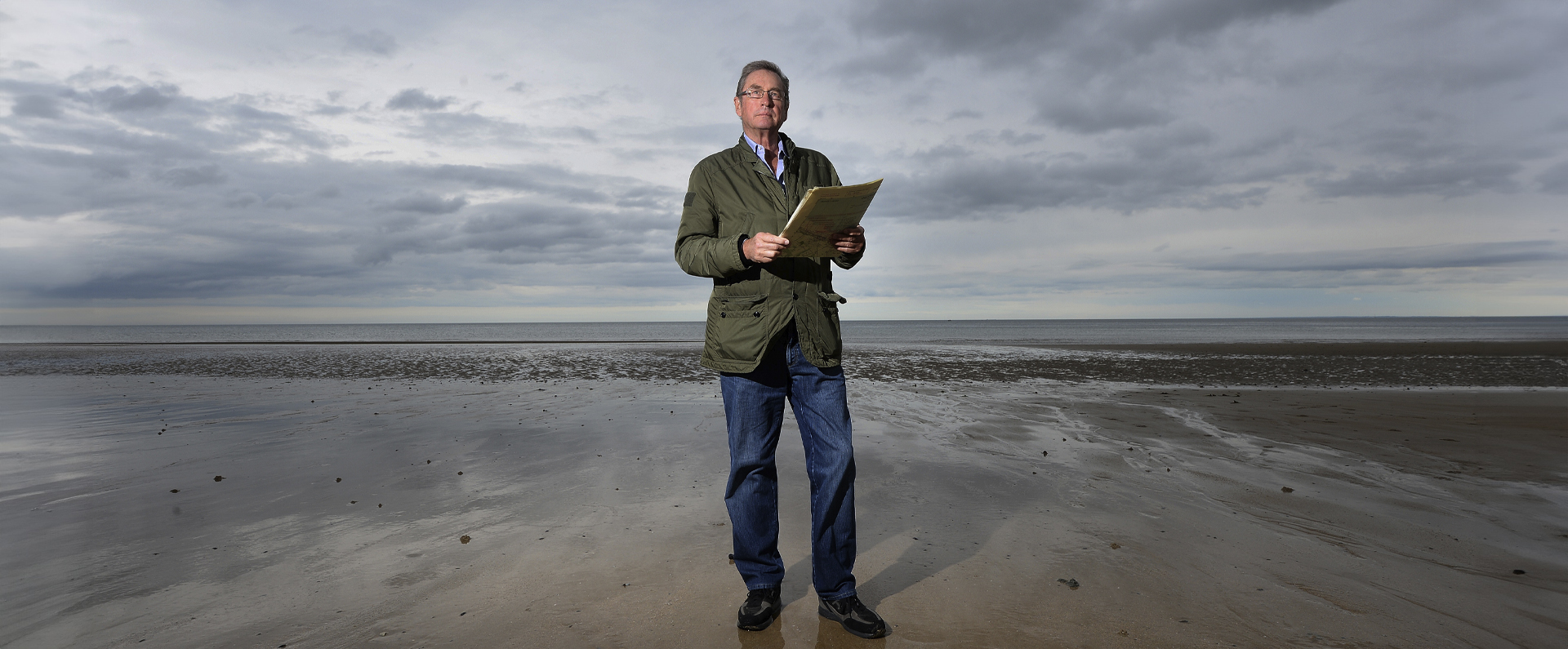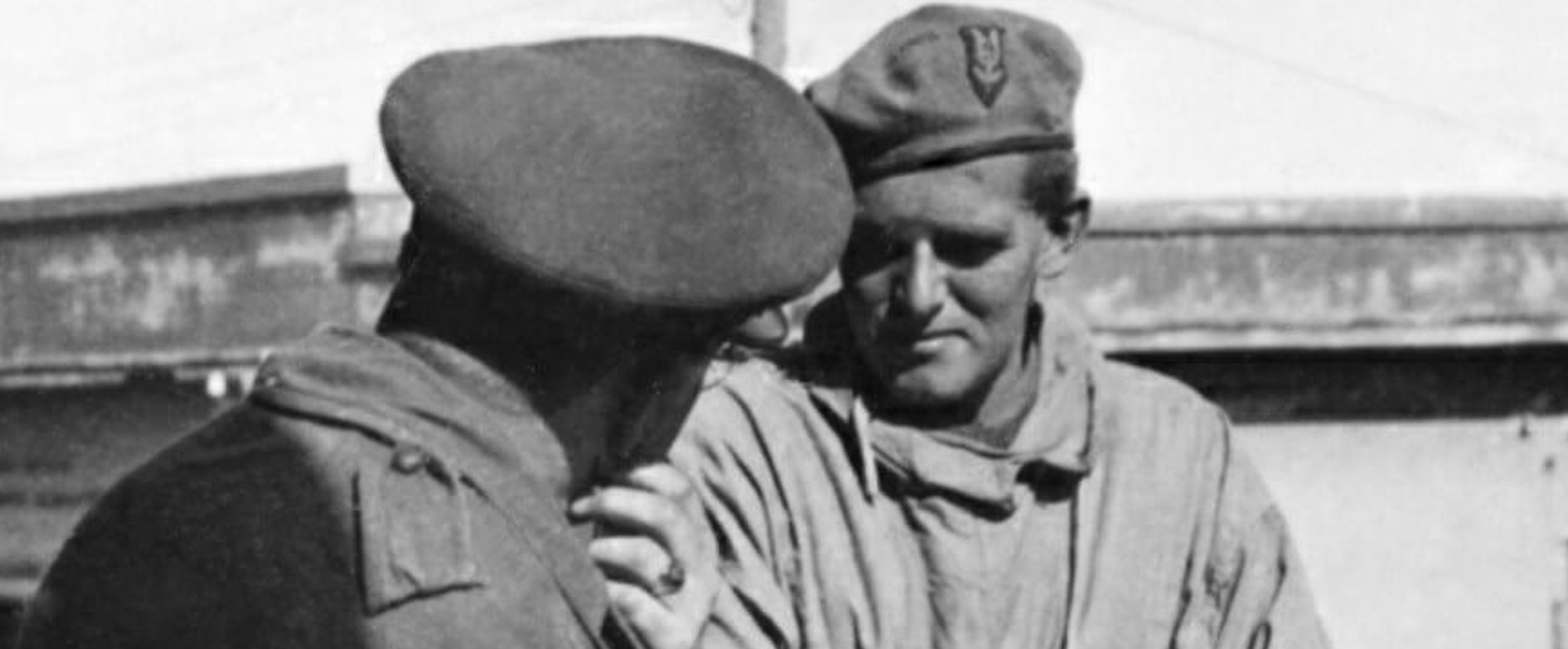
Published in Britain at War in March 2017.
Commander Loftus William Jones VC: leadership
William Loftus Jones was born in Southsea, Hampshire, on 13 November 1879 into a family with a strong naval tradition. He was the second son of Admiral Loftus Jones and his wife Gertrude (née Gray). With his father being such a senior Royal Navy officer, it was not surprising that “Willie”, as he was affectionately known in his family, followed him into the senior service.
After being educated at Eastman’s Royal Naval Academy in Fareham, Hampshire, he rose quickly through the officer ranks and, at just 23, was in command of his own ship, the destroyer HMS Sparrowhawk in 1903. After further appointments, he was elevated to commander in June 1914.
Following the outbreak of the Great War in August 1914, Jones initially commanded the destroyer, Linnet, which, along with three other destroyers, sank the German minelayer Königin Luise as early as 5 August 1914 in the first British action of the war. From 9 October 1914, Jones commanded HMS Shark, a destroyer that, late in December 1914, clashed with the German High Seas Fleet, aggressively pursuing and helping to see off the superior force.
At 2pm on 31 May 1916, HMS Shark, captained by Jones, was providing protection from enemy submarines, along with three other destroyers and two light cruisers, for the Third Battle-Cruiser Squadron as it headed south in the North Sea in advance of the British battle fleet. No enemy ships were known to be in the vicinity and the 91-strong complement of officers and men on the Shark were as relaxed as they could be two years into the First World War. Little did they know it, but the Battle of Jutland was about to begin.
At 2.20pm, messages were received that an enemy force was at sea and the ships’ companies were soon ordered to “action stations” as they proceeded, at full speed, to intercept the enemy. At 5.40pm, German destroyers and light cruisers appeared out of the haze. When ten German destroyers launched a torpedo attack on the Third Battle-Cruiser Squadron, four British destroyers, including the Shark, broke up the offensive.
Soon after the four destroyers had returned to join their two light cruisers, three German battlecruisers appeared and started firing on the six British ships. Under a heavy fire, the Shark was hit and a shell fragment destroyed her bridge helm.
The enemy, whose bombardment was murderous, was using shrapnel, some of which struck Commander Jones in the thigh and face, leaving him to stem the flow of blood with his hands. Meanwhile, the coxswain was hit a second time and lapsed into unconsciousness.
The enemy closed in on the Shark: its after gun was put out of action almost immediately, and its crew killed or wounded, while the forward gun had already been blown away. The situation was worsening by the minute as dead and dying crew lay everywhere. Unsurprisingly, the one surgeon on board was overwhelmed by his task.
By now, the enemy was at close range and preparing for the “kill”. Commander Jones ordered the collision mats over the shot holes as desperate attempts were made to keep the ship afloat. When the crew of the last gun – amidships – was reduced to two men, the Shark’s bloodied captain stood beside it, calling the range. As one of the two men fell, weakened by the loss of blood, the captain took his place.
Then, moments later, Commander Jones was struck by a shell which blew off his right leg above the knee. As his men tied an improvised tourniquet – made from pieces of rope and wood – on his leg, Jones continued to direct the firing.
The bows of the Shark were soon disappearing below the waves and other parts were awash with water as two German destroyers closed in to only a few hundred feet in order to finish off the stricken ship. “Save yourselves,” was Commander Jones’s final orders to his men.
Some 20 survivors clambered on to two rafts and pieces of wreckage as two more torpedoes hit the Shark, blasting the dead and wounded into the water. Her stern rose up and she sank. Commander Jones, who had been placed on one of the rafts and propped in a sitting position, smiled and said: “It’s no good, lads.” Minutes later his head fell forward as he gave his final breath. He was aged 36 when he died.
Some of those who had made it on to the rafts also died from their injuries, or fell into the water and either drowned or died from the cold. Shortly after midnight, however, a flare fired from the other raft was spotted and six survivors from the 91-strong company were eventually rescued by a Danish steamer, the SS Vidar.
Shortly after his death, Commander Jones’s body was washed ashore off the coast of Sweden still in the life-belt that he had donned after being force to leave his ship. On 24 June 1916 he was buried in Fiskebäckskil Churchyard, Vastra, Götaland.
Margaret Jones, Commander Jones’s widow and mother of their daughter Linnette, made extensive inquiries into how her husband had perished and, partly as a result of her investigation, Jones’s posthumous VC was announced on 6 March 1917. The six survivors from the ship were awarded the Distinguished Service Medal (DSM). Mrs Jones received her husband’s VC from King George V at Buckingham Palace on 31 March 1917. Three years later, Mrs Jones, accompanied by Linnette, visited her husband’s grave in Sweden.
I purchased Commander Jones’s VC and service medals in 2012 in a private sale, along with a number of personal effects. Perhaps the greatest compliment to his courage came from Admiral Beatty, the Commander-in-Chief of the Grand Fleet, during the war and later the first Earl Beatty. He said: “No finer act had been produced in the annals of Her Majesty’s Navy.”
Download a PDF of the original Britain at War article
LordAshcroftOnBravery.com


